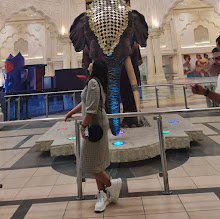You’re scrolling through your phone. Your morning playlist might feature K-Pop, your lunch is a sushi bowl, you’re binge-watching a Spanish thriller on Netflix, and your weekend plans include yoga, an practice with ancient Indian roots. This seamless blend of influences from every corner of the globe is the fabric of modern life, all thanks to globalization.
Globalization—the increased interconnectedness of our world through trade, technology, and travel—has made the planet feel smaller and more accessible than ever. But this incredible exchange prompts a critical question: As the world becomes more interconnected, are we creating a vibrant global tapestry, or are we steamrolling unique cultural identities into a single, homogenous mass?
The answer, as with most things, is complex and multifaceted.
The Case for Homogenization: The "McWorld" Effect
Critics of globalization often point to the erosion of unique cultural identities. This phenomenon is sometimes called the "McDonaldization" or "Coca-Colonization" of the world, where Western—and particularly American—cultural products become dominant worldwide.
Walk through any major city from Tokyo to Buenos Aires, and you’ll see the same familiar logos: Apple, Nike, Starbucks. Hollywood blockbusters dominate box offices, often at the expense of local cinema. English has emerged as the de facto global language of business and the internet, potentially marginalizing local languages and dialects.
This cultural dominance can create a sense of uniformity. Traditional clothing is replaced by fast fashion, local cuisines are overshadowed by international fast-food chains, and unique customs can be watered down for tourist consumption. The fear is that we are trading a world of rich, distinct cultures for a bland, standardized global culture where the most powerful economic forces dictate the norm.
The Case for Hybridization and Exchange: The Rise of the "Glocal"
However, to view globalization solely as a destructive force is to underestimate the dynamism of culture. Culture is not static; it has always evolved through contact with others. What we are witnessing is not simply erosion, but often cultural hybridization—the blending of elements from different cultures to create new, dynamic forms.
This is the "glocal" effect: global ideas being adapted to local contexts. Yes, there’s a McDonald's in India, but it serves the McAloo Tikki burger. K-Pop, a global phenomenon, blends Western pop melodies with Korean language and aesthetics. Bollywood films incorporate storylines and techniques from around the world.
Furthermore, globalization has given a platform to cultures that were previously marginalized. You don’t have to travel to Peru to hear Andean flute music or to West Africa to discover Afrobeats; you can find it on streaming services. Social media allows indigenous communities, local artists, and niche subcultures to share their heritage with a global audience, fostering appreciation and preservation that might not have been possible otherwise.
The Dual Role of Technology: Threat and Savior
The internet is the engine of modern globalization, and it plays a dual role. On one hand, algorithms can promote popular, often Western, content, pushing us toward a digital homogeneity. On the other hand, it is the greatest tool for cultural preservation and exchange in human history.
Online archives store ancient texts, language-learning apps revitalize endangered languages, and platforms like YouTube allow anyone to become a cultural ambassador, teaching the world about their traditional cooking, music, or crafts. The key is conscious consumption—actively seeking out diverse voices rather than passively accepting what the algorithm feeds us.
Finding Balance in an Interconnected World
So, where does this leave us? The impact of globalization on cultural identity is not a simple binary of good vs. evil. It is a tension between:
Access vs. Authenticity: We have more access to other cultures, but we risk engaging with them in a superficial, commodified way.
Exchange vs. Erasure: Beneficial exchange can enrich all cultures involved, but power imbalances can lead to the erasure of less dominant cultures.
Preservation vs. Evolution: How do we honor and protect ancient traditions while allowing culture to naturally evolve and adapt?
The Way Forward: Conscious Global Citizens
The future of cultural diversity isn't about stopping globalization—that’s an impossible and arguably undesirable task. Instead, it's about steering it mindfully.
Support Local: Choose local businesses, artists, and producers. Celebrate what makes your community unique.
Be a Curious Consumer: Go beyond the algorithm. Actively seek out films, music, and literature from other countries.
Engage Deeply: When you encounter another culture, strive to understand its context and significance rather than just skimming the surface.
** Champion Preservation:** Support organizations and initiatives working to protect endangered languages and cultural heritage sites.
Globalization is a powerful river of exchange. It can wash away the unique features of the landscape, or it can be channeled to irrigate and enrich it. The outcome depends on our choices. By embracing curiosity over fear and mindful engagement over passive consumption, we can work towards a world that is not a monotonous melting pot, but a beautiful, diverse mosaic where every piece retains its unique color and character.
What do you think? Is globalization a threat or an opportunity for your cultural identity? Share your thoughts in the comments below.













No comments:
Post a Comment